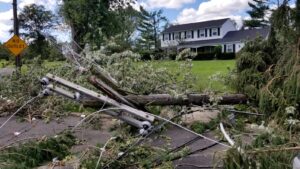Russian space officials have an ongoing air leak from the Russian segment of the International Space Stationbut said it posed no danger to his crew.
The Roscosmos state corporation said that specialists were monitoring the leak and the crew was “regularly working to locate and fix possible locations of the leak”.
“There is no threat to the crew or the station itself,” it said in a statement carried by Russian news agencies.
Joel Montalbano, NASA’s station project manager, noted on Wednesday that the leak in the Russian segment had increased, but stressed that it remained small and posed no threat to crew safety or vehicle operations.
As the space outpost ages, the crew must spend more time repairing and maintaining it, Roscosmos said.
Russian space officials first reported a leak in the Zvezda module in August 2020 and later that year Russian crew members located what they believed to be its source and try to fix it. In November 2021, another potentially leaking spot was found in another part of the Russian section of the station.
Roscosmos and Nasa said the leak posed no danger to the crew and did not affect operations on the station.
There were other mistakes. In October, coolant leaked from an external backup cooler for Russia’s new science lab, Nauka, although its main thermal control system was operating normally and space officials said the crew and the station were not in danger.
In December 2022, coolant leaked from a Soyuz crew capsule docked at the station, and another similar leak from a Progress supply ship was discovered in February 2023. A Russian investigation concluded that those leaks were likely the result of impacts by small meteoroids, not manufacturing defects.
The space station, which served as a symbol of international cooperation after the Cold War, is now one of the last remaining areas of cooperation between Russia and the west amid tensions over Moscow’s military actions in Ukraine. Nasa and its partners hope to continue operating the orbiting outpost until 2030.
The station’s current crew consists of Nasa astronauts Jasmin Moghbeli and Loral O’Hara, the European Space Agency’s Andreas Mogensen, Russian cosmonauts Konstantin Borisov, Oleg Kononenko and Nikolai Chub and Japanese cosmonaut Satoshi Furukawa.






